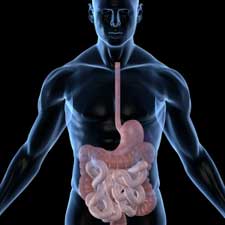Ever had a “gut feeling”?
All of us have had the experience where we have some emotional stress, and right away our stomach gets upset, and our breath rate may increase. Perhaps you have to make a choice and it just “feels right” in your gut.
Well, modern science is going a long way to make sense of that. Studies with medication such as antidepressants and cancer drugs have opened a window into how the brain at the top of your body and the “brain in the gut” work together.
Scientific American has a detailed article on the function of these two brains:
“Think Twice: How the Gut’s “Second Brain” Influences Mood and Well-Being
The emerging and surprising view of how the enteric nervous system in our bellies goes far beyond just processing the food we eat”
By Adam Hadhazy
(excerpts)
“As Olympians go for the gold in Vancouver, even the steeliest are likely to experience that familiar feeling of “butterflies” in the stomach. Underlying this sensation is an often-overlooked network of neurons lining our guts that is so extensive some scientists have nicknamed it our “second brain”.
A deeper understanding of this mass of neural tissue, filled with important neurotransmitters, is revealing that it does much more than merely handle digestion or inflict the occasional nervous pang. The little brain in our innards, in connection with the big one in our skulls, partly determines our mental state and plays key roles in certain diseases throughout the body.
(snip)
Technically known as the enteric nervous system, the second brain consists of sheaths of neurons embedded in the walls of the long tube of our gut, or alimentary canal, which measures about nine meters end to end from the esophagus to the anus. The second brain contains some 100 million neurons, more than in either the spinal cord or the peripheral nervous system, Gershon says.”
——————
The article suggests that scientists will need to start looking at the “two brains” as a team rather than seperate players. This has far-reaching implications in medicine and psychiatry.
In march of 2009 I posted this review of “The Wellspring”, a book that pulls together elements of the mind and enteric system in the context of the mystery of “Chi” and martial arts:
Wednesday, March 25, 2009
Review: “The Wellspring” – Students Of Chi; Get This Book!
“Every human being can draw in the course of his education from the inexaustable wellspring of the divine in man’s nature”.
I Ching – #48, Ching / The Well
*********************************
The last class I had with my Tai Chi Chuan instructor, Michael Gilman, he handed me this book as I was leaving. “The Wellspring” he said, was the best book on the science of Chi that he has read.
I had just finished “Chi Gong” by Dong and Esser, and provided THIS REVIEW. Dong and Esser go a long way to explaining the science behind Chi, but “Wellspring” answers the rest of the questions I had. Without a doubt, this book has a sensible approach firmly rooted in scientific studies. Of course, there is no way I can solve the mystery of Chi in a few paragraphs here, but this is a piece of the puzzle that “The Wellspring” presents:
The “enteric nervous system” is basically everything from your tongue to your anus, all your guts and bowels. According to Christopher Dow in “The Wellspring”, there are more nerves in your gut than there are in your brain. The brain also releases serotonin, a chemical substance that is a neurotransmitter, but the intestines release even more than the brain. Dow carefully walks us through fetal development demonstrating the direction of energy flow up the spine, and down the front of the body via the conception channel, gut, or “enteric system”. Scientific studies have shown that the bowels, when completely isolated from the brain, will still perform peristaltic action – the undulation of the gut that moves food through. This may be the link to serotonin in the intestines, and the gut almost behaving as a “second brain”. Starting to get the connection? The point below our belly-button, the Dantien, is the center of the gut, with more nerves and serotonin than the brain. Dow goes on to explain both bioelectricity and electromagnetism within the body, both which account for the meridian systems in Chinese medicine.
While giving complex explanations of these functions, “The Wellspring” is not “over the top” in science. it is very readable, with humorous stories illustrating the concepts to be explained. A smooth transition is presented between scientific studies and the actual types of breathing, visualization and postures of Yogic Chi practice.
Moreover, author Christopher Dow is a martial artist, a long time practitioner of Tai Chi Chuan. The second half of the book relates to Chi in the martial arts. Even more directly, the difference between localized Chi in the muscular contractions of hard-style arts vs. the whole-body Chi of internal martial arts.
“The Wellspring” describes Chi in a way that even skeptics may have to re-think. If you practice Chi Gong, Yoga, or Martial Arts, this book will help you understand the how and why of Chi. If you are going to pick one book to help you understand the concept of Chi in the human body, this is it!
“The Wellspring”, by Christopher Dow is available through Phosphene Publishing company at this link.
————————————-
Try this experiment:
When you are experiencing stress, your brain sends a signal to your gut. Chemicals in your body are released that cause “butterflies” or otherwise upset your stomach. Your breath rate is then affected, it generally increases.
If you can put this same system into reverse, you can gain more control of your system: control your breath. Breathe deep and easy, count your breaths if you choose. With practice, you can learn to remain calm and control these chemical changes in your body.


